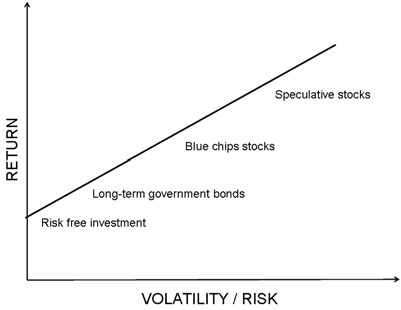Applying Animation to the Visual Analysis of Financial Time-Dependent Data
Authors
Short description
Figures
The figure shows the relationship between return and volatility for some example asset categories. It is usual that riskier assets can mean higher returns and vice versa.
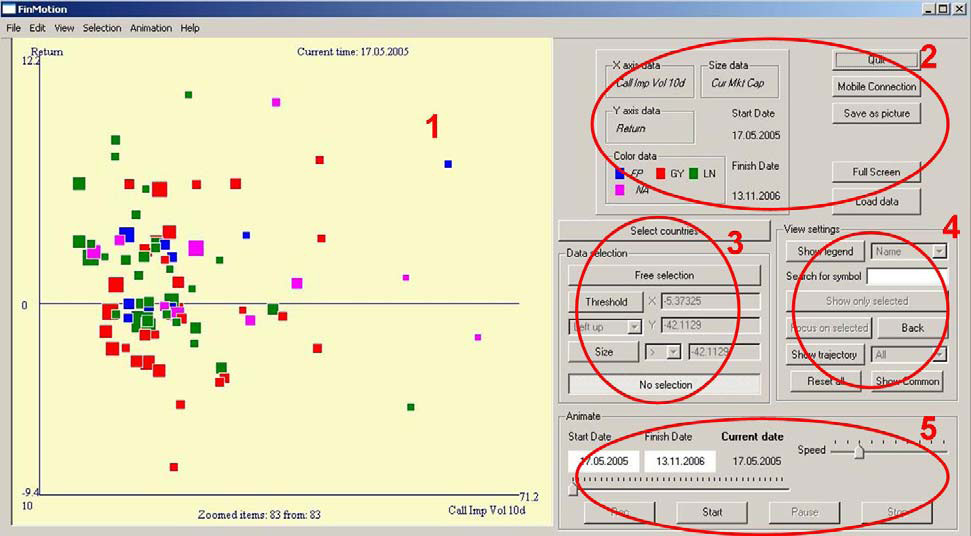
The FinMotion userinterface is divided into two areas:
- Main visualisation window
- Interaction panel
The window contains five panes as it can be seen on the picture.
- Pane 1: "Scatter plot view": Is used for viewing scatter plots which are very important for the analysis. The interaction panel consists of tools to manipulate the scatter plot view.
- Pane 2: "Data": Provides tools to manipulate data and get data descriptions.
- Pane 3: "Data selection": Provides features for selecting data.
- Pane 4: "View settings": Provides more features for data visualization and manipulation.
- Pane 5: "Animation": Provides tools for manipulationg motion features.

Negativ values in the scatter plot are represented as unfilled rectangles. The size of the rectangle represants the absolute value of the data point.
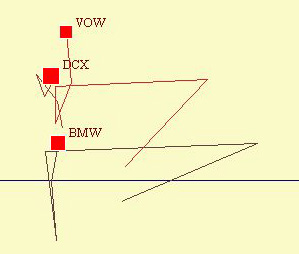
The animation of data points can be a very powerful tool but it hides the history. Therefore users can choose to show trajectory paths during animation.
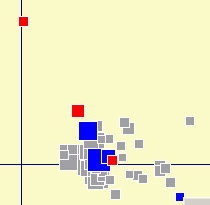
Focus and Zoom: Users can define "target stocks". Selected data items keep their original colour and other items are coloured in grey. This gives the users the possibility to concentrate on interesting data. This feature is also very useful because of the overlapping glyphs problem.
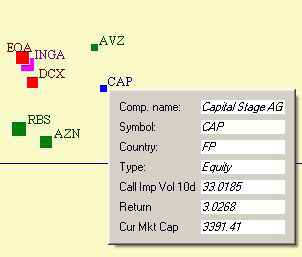
This picture shows the "Details on Demand" feature of FinMotion.

The legend text placement was a major challenge. The legend text can be places somewhere around the glyph in the grey area. The algorithm the authors used works fine, but it is impossible to overcome the overlapping legend problem completely.
Important citations
Data types
FinMotion is suitable for daily stock market data or any other kind of financial data with temporal information.
Evaluation
A usability survey has been carried out and the feedback was very positive. The software has shown an incredible ease of use and the animation feature was also very positively ranked. Some new features have been added upon request.
References
- [Tekusova and Kohlhammer, 2007] Applying Animation to the Visual Analysis of Financial Time-Dependent Data
- [Schreck, Tekusova, Kohlhammer and Fellner, 2007] Trajectory-based visual analysis of large financial time series data]
Evaluation Reference
- [Tekusova and Kohlhammer, 2007] Applying Animation to the Visual Analysis of Financial Time-Dependent Data
